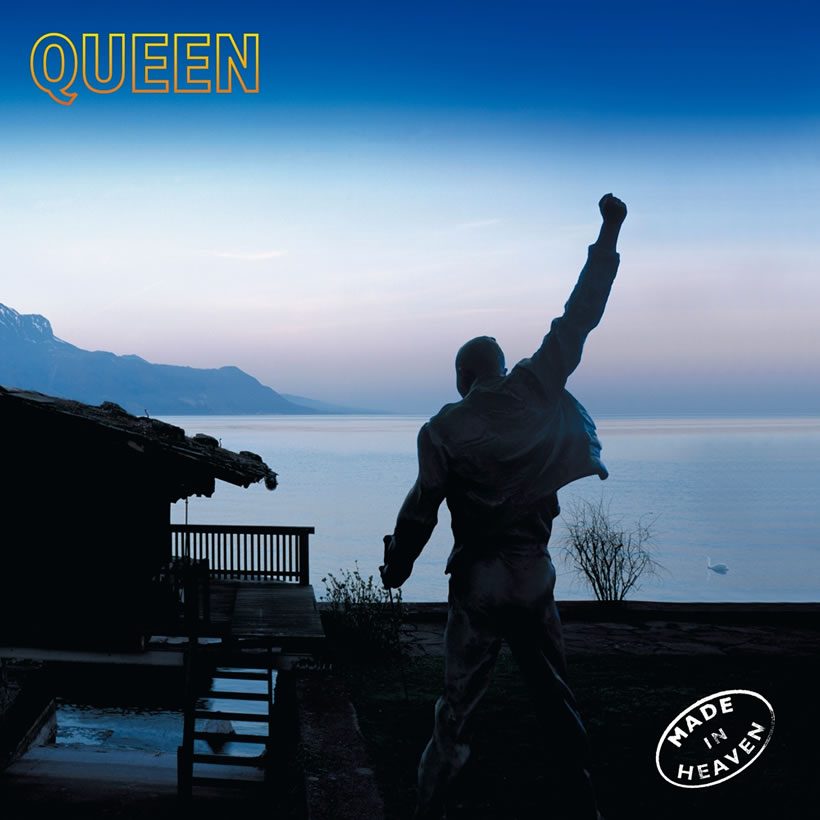‘Made In Heaven’: The Aptly Named Album That Drew The Curtain On Queen
Queen’s fifteenth studio album was a set of thirteen tracks painstakingly put together from a period spanning 1980 to 1995.

Everyone mourned Freddie Mercury’s death at the age of 45 at his home in Kensington on the evening of November 24, 1991. Five months later, The Freddie Mercury Tribute Concert held on Easter Monday, April 20, 1992, at London’s Wembley Stadium was a celebration of his life, one lived to the full. There were many who thought that this was it as far as new recordings from the band with Freddie out front. And yet, four years later, Brian May, John Deacon, and Roger Taylor managed to construct a new album, featuring Freddie, that included his final recordings from 1991; material left over from previous albums and re-workings of songs that seemed relevant from May, Taylor and Mercury’s own solo ventures.
Listen to Made in Heaven on Apple Music and Spotify.
The new work, Made In Heaven, came out on November 6, 1995, and was a set of thirteen tracks painstakingly put together from a period spanning 1980 to 1995. These included Freddie captured in Mountain Studios in his latter months with posthumous recording taking place in Allerton Hill, Rossford Mill, and Metropolis Studios. Fresh instrumentation was added to available Mercury vocals. Knowing he was dying, Freddie had committed several things to tape in Switzerland for future use. According to Brian May, he’d told the others, “’I can come in for a few hours’; our plan was to just make as much use of him as we could. You know he told us, ‘Get me to sing anything, write me anything and I will sing it and I will leave you as much as I possibly can.’”
Following his death, Deacon and Taylor sought to create a framework while May was promoting his Back To The Light album, but the sessions weren’t deemed quite right and so the trio started from scratch with the assistance of the trusted Dave Richards. What emerged was a labor of love that May views as up there with Queen’s best work and while allowing for sentiment, Made In Heaven is a coherent body of work.
It opens with the song, “It’s A Beautiful Day,” an improvisation from Musicland, Munich 1980. A simple, optimistic piece with added classical overtones provided by Deacon, this lovely song removed most of the trepidation Queen fans might have felt on purchasing the new album.
Freddie’s “Made In Heaven” is a reworking of the song on his Mr. Bad Guy album, on which none of the others had played until now. The vocal was isolated and then Roger, John, and Brian give it their full trademark Queen sound.
The rock ballad, “Let Me Live,” had been intended for The Works album and was therefore pretty much intact and ready to go. Reputedly a song they wanted to pitch to Rod Stewart, it is claimed that the singer and Jeff Beck did apparently turn up to an early session to trial the track, a soulful rocker. In its newer guise, the song also has extra backing vocals with four additional singers, including Catherine Porter from The Brian May Band and the South African born Miriam Stockley adding layers of sweetness.
“Mother Love” is significant since it was the last song that Mercury and May wrote together and it contains Freddie’s last ever-vocal performance, from May 1991. Unable to complete his part, Mercury had retired sick and so May sings the final verse. In the new version there is a sample from Queen’s 1986 Wembley Stadium show and bits edited in from “One Vision,” “Tie Your Mother Down,” and a cover of the Goffin and King classic “Goin’ Back,” the latter having been the B-side to Freddie’s/Larry Lurex alter ego 1972 single, “I Can Hear Music.”
John Deacon’s “My Life Has Been Saved” had been available as the B-side to the “Scandal” single, but the band arrangement is different and the bass player adds guitar and keyboards to a song that evolved from a demo to an accomplished piece.
“I Was Born To Love You” evolved from the single recording Mercury made for Mr. Bad Guy in 1984. The extant Queen used this in remixed form, added their band parts, and some samples of the singer ad-libbing on the song “A Kind Of Magic,” and his solo cut “Living On My Own.”
Sticking to the synth-less process of the early albums (Queen were aware that the fans would prefer it that way), each member hammered home his part in the template. Roger Taylor’s “Heaven For Everyone” fits the format perfectly. A strong enough item when it appeared on Roger’s The Cross Project, where Freddie sang as guest on the Shove It album, and it now soared with Queen’s wholehearted treatment. This song was released as a single in October 1995 and whetted the appetite for the album that followed a month later by reaching #2 in the U.K. and giving Queen a Silver disc for sales of 200,000 plus.
“Too Much Love Will Kill You,” penned by Brian, was a universal song with specifically personal connotations, not just for Freddie (though one can only say that in hindsight since it wasn’t written with him in mind), but also for himself. One of Queen’s most impassioned numbers, it had been trialed by them for possible inclusion on The Miracle. May and his co-writers Frank Musker and Elizabeth Lamers reached an agreement to resurrect a piece that had been available as a solo single, as well as on Brian’s Back To The Light (1992). A softer, more reflective piece than one might associate with Queen, this won the Ivor Novello Award for “Best Song Musically and Lyrically” in 1997 and is a song that has become a firm favorite among fans.
Dave Richards should take credit for constructing “You Don’t Fool Me” from recovered tapes of disparate lyrics/vocals that he spent hours reshaping, giving the musicians the framework to this outtake from Made In Heaven. Once he’d accomplished his task, Brian, Roger, and John set about turning this into a memorable song with their old relish renewed.
The last rescued original is the aptly named “A Winter’s Tale,” written while Freddie gazed out of his sanatorium window overlooking Lake Geneva, Switzerland. The last song he wrote on his own (“Mother Love” having been a collaboration with Brian) this reverie has an escapist lyric that seems to portend the thoughts of a man reminiscing about childhood, the past in general, and an escape into endless tranquility.
A reprise of “It’s A Beautiful Day,” rocked up in its finale, and a vocal mantra called “Yeah” (barely seconds long) close the standard album. The CD had the additional Track 13, with loops and ambient segues that were possibly influenced by the unreleased (but bootlegged) Beatles track “Carnival Of Light.”
With its many positive themes – life, love, beauty – Made In Heaven was better than anyone could dare to have hoped. All the ingredients of classic Queen were to be found – choral vocals, Freddie in full flight, the band hitting a glam rock stride, and not being scared to experiment. Sales wise it topped nine charts, including the UK, German and Italian. It returned Queen to Gold status in the U.S. and was to be certified 4x Platinum in Queen’s homeland.
Twenty years on, Made In Heaven sounds like something that simply had to be done. It allowed May, Deacon, and Taylor to let off emotional steam and get their perspective back. What had been started in Smile all those years ago had ended on a bittersweet note, but after the tears were dried, life would go on, as Freddie Mercury put it: “With the dreams of the world in the palm of your hand.”












